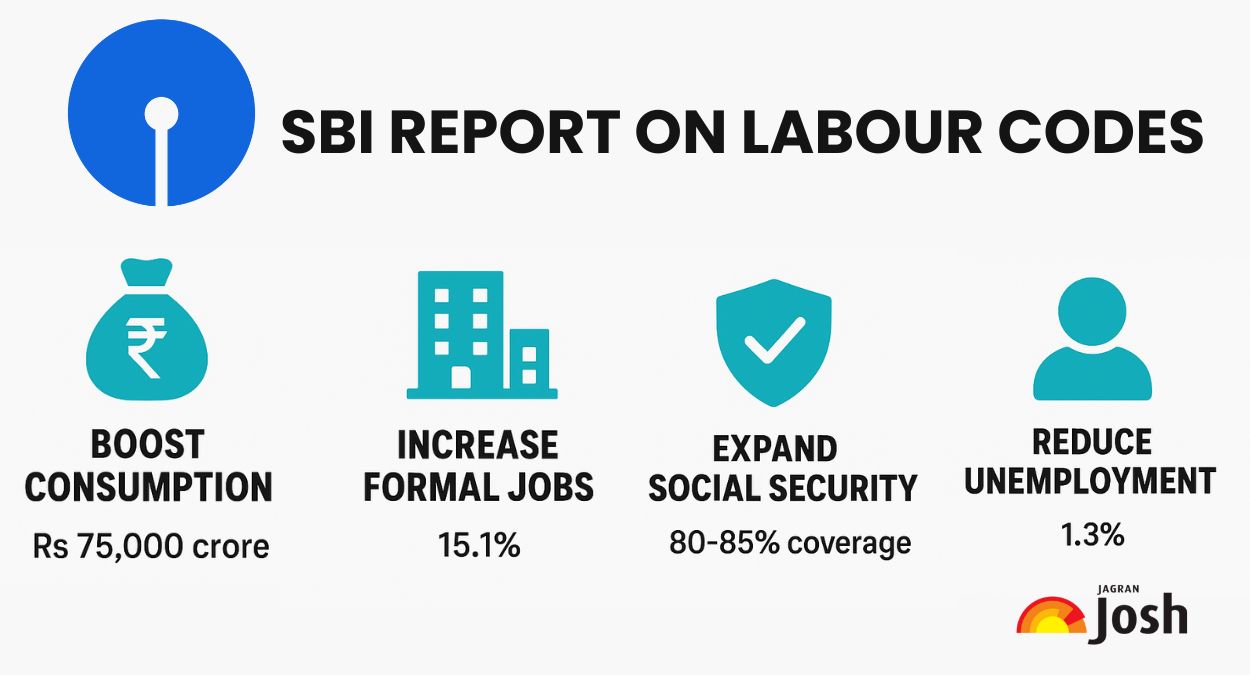India stands at a turning point where policy changes are expected to reshape the economy and improve the lives of millions of workers. According to the latest SBI report, the implementation of the new labour codes will play an important role in strengthening the labour market, increasing formal employment, and boosting consumption across the country. These labour law reforms India has introduced are not only structural changes but also a major step toward making the workforce more secure and productive.
The report highlights that these reforms could increase consumption by Rs 75,000 crore, expand social security, and reduce unemployment in the coming years. This article explains the key insights from the report, its economic impact, and what these changes mean for workforce in India.
How the New Labour Codes Will Impact India’s Economy?
The new labour codes are designed to simplify, modernize, and strengthen India’s labour framework. The SBI report states that these reforms could give a major boost to consumption, estimated at around Rs 75,000 crore, as improved social security and better wage structures push disposable income upward.
Economists point out that with a national saving rate of nearly 30%, the post-implementation period could bring an additional Rs 66 per person per day into circulation. When multiplied across India’s working population, this results in a considerable rise in demand and day-to-day spending.
These labour law reforms India has introduced aim to create a more balanced relationship between employers and workers and support overall economic growth.

New Labour Codes and the Growth of Formal Employment
One of the most significant outcomes expected from the new labour codes is the growth of formal jobs. Today, about 60.4% of India’s workforce is estimated to be in formal employment. The SBI report suggests that this number may rise by 15.1% in the next few years.
This formalisation is crucial because it brings better job security, more stable income, and stronger protection for workers. It also allows the government to track workers more accurately, ensuring that welfare schemes reach the right people.
Businesses are also encouraged to follow transparent employment practices under the new reforms. This contributes to a more organised labour ecosystem.
Social Security Coverage to Expand Under New Labour Codes
The SBI report highlights a major benefit of the labour law reforms India has rolled out. It is an expansion of social security. At present, India has around 44 crore workers in the unorganised sector. Of these, around 31 crore are registered on the e-Shram portal.
Assuming that even 20% of these workers move from informal to formal payrolls, nearly 10 crore workers could receive social security benefits. This could increase national social security coverage to 80–85% in the next two to three years.
The benefits include insurance support, provident fund, health protections, and safety and workplace security measures
Such coverage ensures financial stability for workers and reduces income uncertainty.
Also Check:
12 New Labour Law Changes in 2025 Every Employee Should Know
How the New Labour Codes May Reduce Unemployment?
Another important insight from the SBI report is its projection that the new labour codes could reduce India’s unemployment rate by around 1.3% in the medium term. The actual reduction will depend on how smoothly the changes are implemented across states, how businesses adapt to the reforms, and how quickly workers transition into the formal sector.
Job opportunities are expected to increase, especially in sectors like manufacturing, logistics, gig work, services, and MSMEs as firms adjust to new rules. This transformation will help India strengthen its workforce and move toward a more stable and inclusive labour market.
Comments
All Comments (0)
Join the conversation